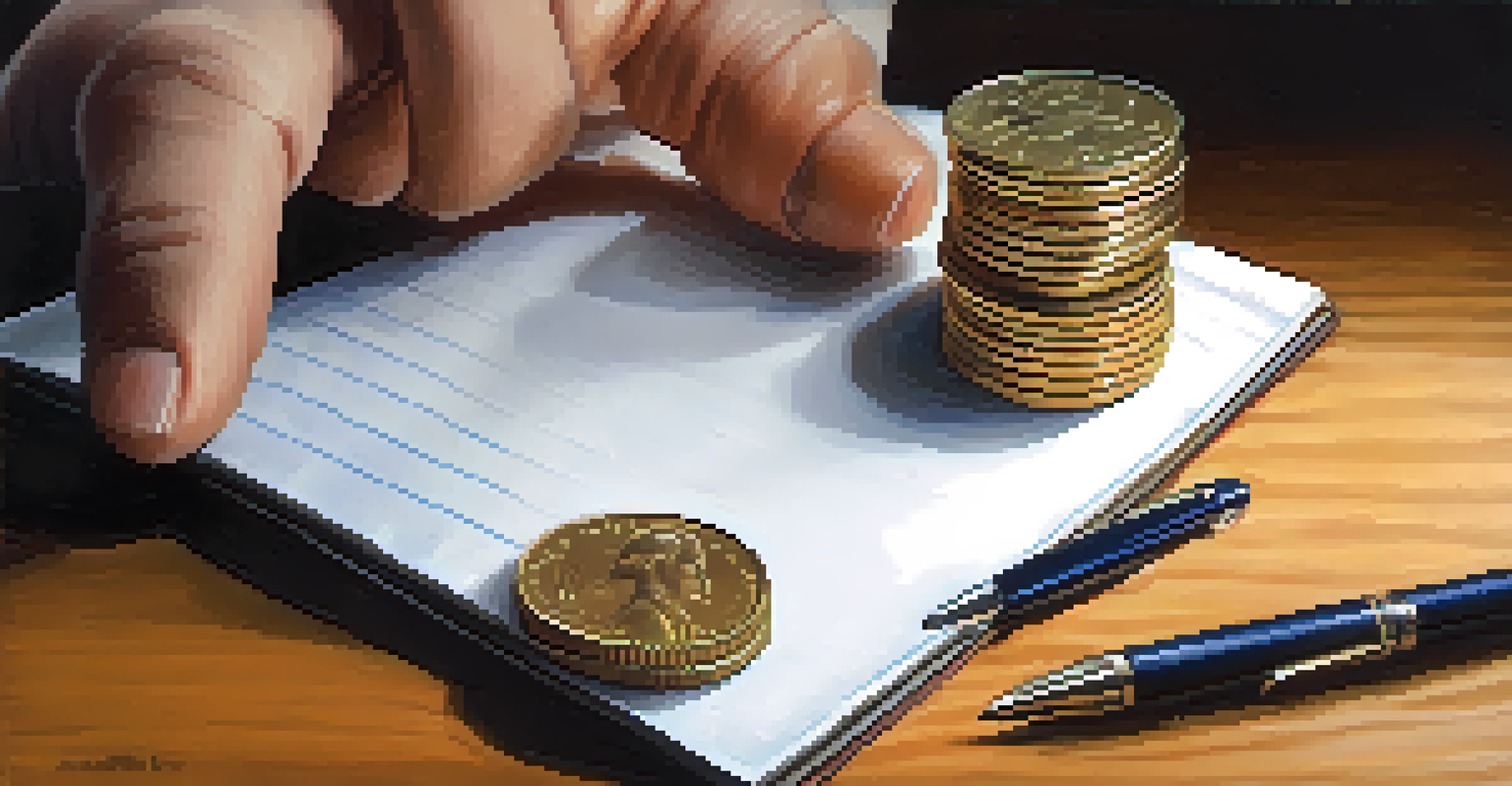Understanding the Basics of Building an Emergency Fund

What is an Emergency Fund and Why is it Important?
An emergency fund is a savings buffer that helps cover unexpected expenses, such as medical bills or car repairs. Think of it as a financial safety net that keeps you afloat during turbulent times. Without this cushion, you may find yourself relying on credit cards or loans, which can lead to debt and financial stress.
An investment in knowledge pays the best interest.
Having an emergency fund is essential because life is unpredictable. Whether it’s a sudden job loss or an unexpected home repair, these situations can strain your finances. An emergency fund ensures that you can handle these challenges without derailing your financial goals.
In essence, an emergency fund provides peace of mind. Knowing that you have money set aside for emergencies allows you to focus on other aspects of your life, from career aspirations to personal growth, without the constant worry of financial instability.
How Much Should You Save for an Emergency Fund?
Determining the right amount to save can feel overwhelming, but a common guideline is to aim for three to six months' worth of living expenses. This range can vary depending on your individual circumstances, such as job stability or family size. For instance, if your monthly expenses total $3,000, you should target a fund between $9,000 and $18,000.

It's important to assess your personal situation when deciding how much to save. If you have a steady job and a dual-income household, you might lean towards the lower end of the spectrum. Conversely, if you're self-employed or have dependents, a larger fund might provide more security.
Emergency Fund: Your Financial Safety Net
An emergency fund acts as a crucial buffer for unexpected expenses, allowing you to handle financial surprises without falling into debt.
Ultimately, your emergency fund should give you a sense of security. The goal is to have enough savings to cover essential expenses in case of an unexpected event, allowing you to navigate through tough times with confidence.
Where to Keep Your Emergency Fund
When it comes to storing your emergency fund, accessibility is key. You want to ensure that your savings are easily reachable without the risk of spending them on non-emergencies. A high-yield savings account is often a great option, as it allows you to earn interest while keeping your funds liquid.
The best way to predict your future is to create it.
Avoid tying your emergency fund up in long-term investments like stocks or retirement accounts, where accessing funds could incur penalties or take time. Instead, look for accounts that offer both safety and a competitive interest rate to maximize your savings.
The right savings vehicle can make all the difference. By choosing an account that meets your accessibility needs, you’ll be prepared for any financial curveballs life throws your way.
How to Start Building Your Emergency Fund
Starting an emergency fund can feel daunting, but it’s easier if you break it down into manageable steps. Begin by setting a specific savings goal based on your monthly expenses. Once you have a target, create a budget that prioritizes saving for your emergency fund.
Consider automating your savings to make it even simpler. Set up a direct deposit from your paycheck to your emergency fund account each month. This way, you’re consistently contributing without having to think about it, similar to how you'd pay a bill.
Aim for 3-6 Months of Expenses
Saving three to six months' worth of living expenses can provide the security needed to navigate life's unpredictabilities.
Even small contributions can add up over time. Remember, the most important thing is to start. Each deposit, no matter how small, brings you one step closer to financial security.
Common Mistakes to Avoid When Building an Emergency Fund
One of the most common mistakes is not having a clear goal. Without a target amount, it’s easy to lose motivation or underestimate how much you truly need. Establishing a specific savings goal can keep you focused and accountable.
Another pitfall is dipping into your emergency fund for non-emergencies. It can be tempting to use those savings for a vacation or new gadget, but doing so undermines the purpose of having that fund. Treat your emergency savings like a sacred reserve that should only be accessed in true emergencies.
Lastly, don’t overlook the importance of reviewing and adjusting your fund regularly. As your life circumstances change, so too should your savings goal. Regular check-ins can ensure your emergency fund remains adequate and relevant to your current situation.
When to Use Your Emergency Fund
Understanding when to tap into your emergency fund is crucial. Use it for unexpected expenses like medical emergencies, car repairs, or job loss. These situations are precisely why the fund exists, providing you with a financial lifeline when life throws a curveball.
However, it’s important to distinguish between needs and wants. Avoid using your emergency fund for planned expenses, such as vacations or home renovations. Keeping the fund strictly for emergencies preserves its purpose and helps you remain financially stable.
Use Funds Only for True Emergencies
It's important to reserve your emergency fund strictly for unforeseen situations, ensuring its effectiveness when you truly need it.
Once you’ve used some of your emergency fund, make it a priority to replenish it. Life is unpredictable, and having that safety net in place is essential for your overall financial health.
Maintaining and Growing Your Emergency Fund
Building your emergency fund is just the beginning; maintaining and growing it is equally important. Regular contributions, even small ones, can help your fund flourish over time. Consider setting up recurring transfers to your emergency fund to ensure consistent growth.
Additionally, as your financial situation improves, reassess your savings goal. If you receive a raise, for example, think about increasing your contributions to your emergency fund. This proactive approach will help you stay ahead and ensure that your fund remains robust.

Lastly, keep your emergency fund in a high-yield savings account to earn interest on your savings. This allows your money to grow while remaining accessible, making your emergency fund work as hard as you do.